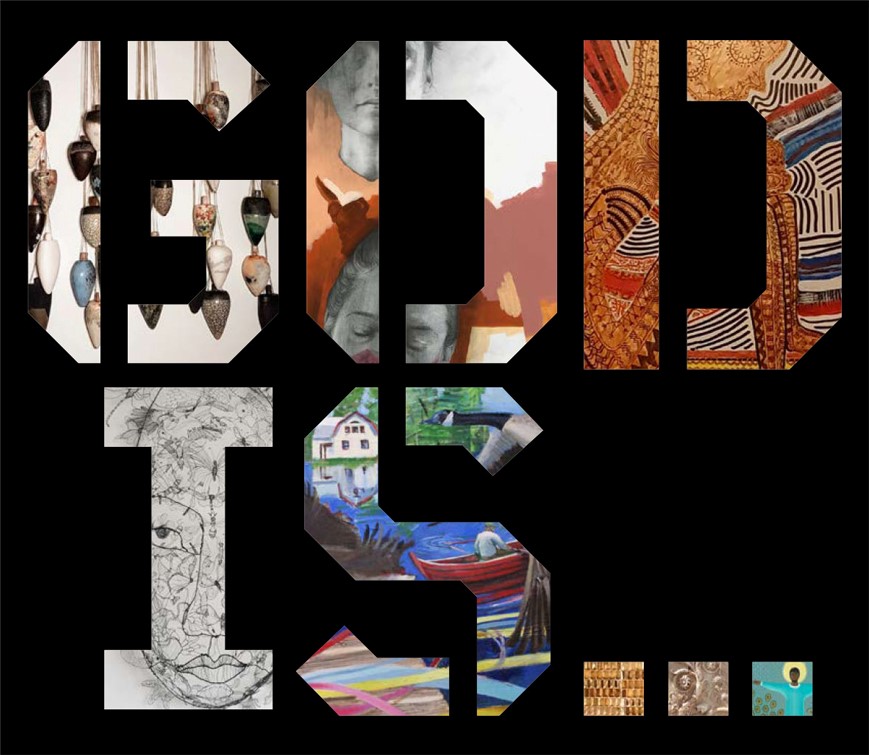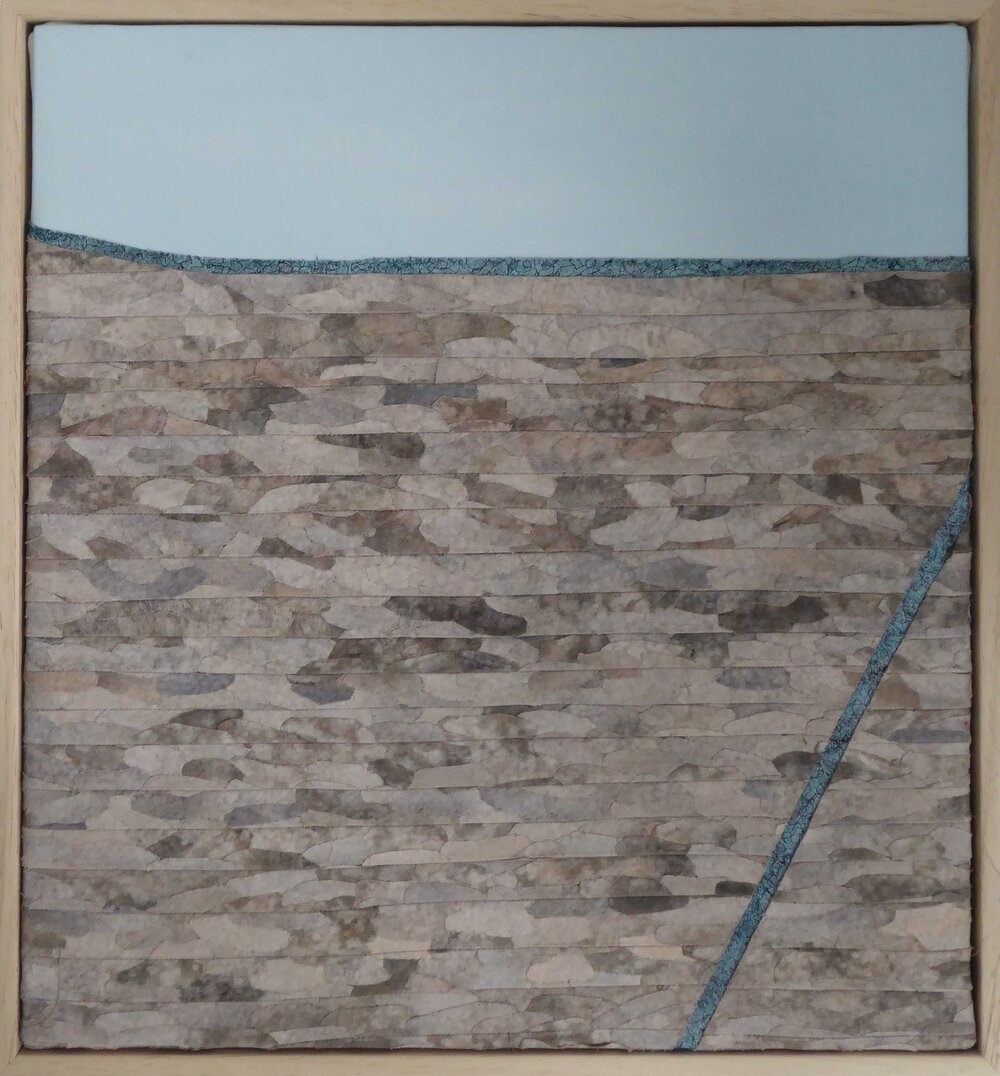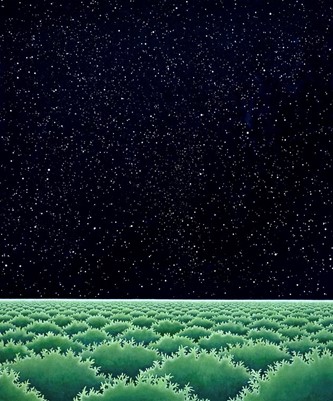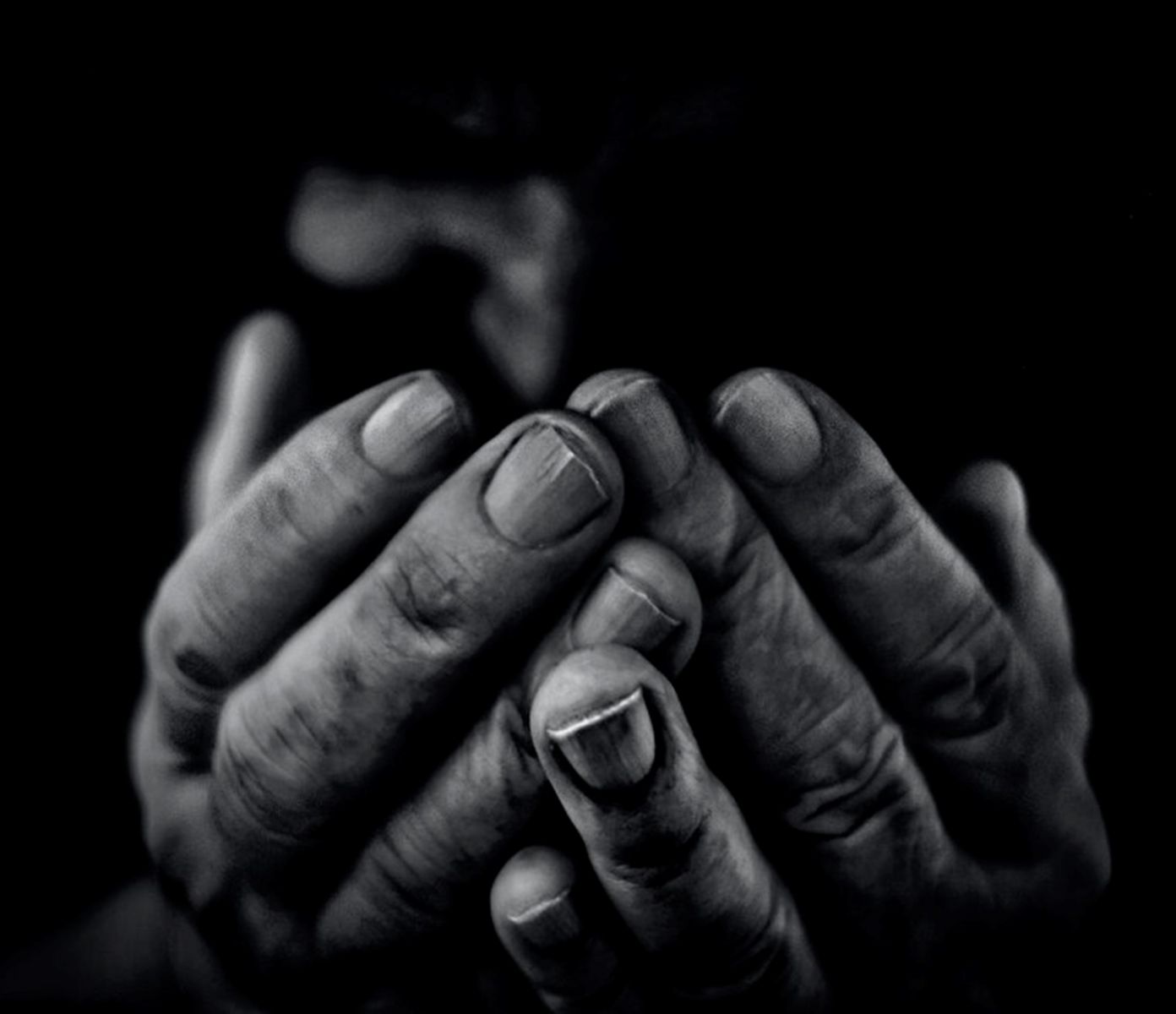Chaiya Art Awards 2021 Exhibition: “God Is . . .”
Chaiya Art Awards 2021 Exhibition: “God Is . . .”
by Victoria Emily Jones

Announced in 2019, the second Chaiya Art Awards competition on the theme of “God is . . .” received more than seven hundred entries from across the UK—paintings, photographs, textiles, glass, pottery, kinetic sculpture, metalworks, and various other media. Fifty of these artworks have been jury-selected to be exhibited May 14–23, 2021, at gallery@oxo on London’s South Bank. The first-place winner, who will receive £10,000, will be announced May 13, along with seven others. Prizes are awarded based on theme interpretation, originality and technique, and emotional impact.
The exhibition had been planned for April 2020, but COVID-19 caused it to be postponed. While the shortlisted artists had already been chosen, the catalog production was halted so that the text (a mix of prose and poetry) could be completely updated and revised to reflect on the challenges of 2020. In addition, an interactive virtual exhibition has been developed for those who are unable to attend the live show, which will be available May 14 through July 31 at https://chaiyaartawards.co.uk/godis. The layout of both is roughly the same.
An excerpt from John Donne’s Devotions provides the epigraph to the God Is . . . catalog: “My God, my God . . . you are a figurative, a metaphorical God . . . a God in whose words there is such a height of figures, such voyages . . . to fetch remote and precious metaphors, such extensions, such spreadings, such curtains of allegories . . . and such things in your words. . . . You are the Dove that flies.” Donne’s words allude to the multifacetedness of God and God’s hard-to-pin-down-ness.
With a topic as vast and open-ended as “God is . . . ,” there was sure to be a range of interpretations, and that’s what we get, with some artists coming at it from a Christian perspective and others from other religious traditions or none at all. God is nature or the creator of nature, God is humanity or the self, God is our hands, God is the interconnected web of all life, God is Everything, God is the least of these, God is a human invention, God is a puzzle, God is rescuer, God is healer, God is within us and all around us, God is a suffering God, God is betrayed by humanity, God is technology (or rather, technology is our god). God is radiant, gentle, life-giving, unknowable, I AM. God is known in Jesus Christ. These are among the artists’ visual responses.
Some of the artworks, I feel, have only a very tenuous or strained connection to the prompt. For example, a portrait of a little boy sitting in shadow “symbolises the duality of God’s light and the inescapable darkness in the human condition.” An abstract work titled Golden Algorithm “deals with materials, surfaces, reflections, shadows . . . the stuff of existence for me.” Though fine works in themselves, they don’t illuminate the question of who or what God is. It’s not that I expect obvious answers or hard-and-fast definitions—our conceptions of God are, after all, limited and hazy at best, and God is ultimately unpicturable—but some of the art seems not to engage directly with the theme.
My favorite work in the exhibition is probably Marian Hall’s All that is seen and unseen, inspired by her visit to the Atacama Salt Flats in Chile.

Made of fabrics, the work gives a sense of the scale and beauty of those desert lands encrusted with dried salt crystals and spread with large expanses of water fed by unseen underground reservoirs. Her title comes from the first line of the Nicene Creed (325 CE): “We believe in one God, the Father Almighty, maker of heaven and earth, of all that is seen and unseen.” As the apostle Paul says in Colossians 1:16, “For by him all things were created, in heaven and on earth, visible and invisible, whether thrones or dominions or rulers or authorities—all things were created through him and for him” (ESV). I like how Hall suggests that God is active underneath the surface of things, animating our world, which, like the Divine, is full of layered depths.
Xander Haywood also submitted a landscape image, Horizon, that hints at God’s immensity and invites wonder: a starry night sky above a forest canopy. The artist says he feels at one with God when he gazes at the sky.

By contrast, Jo Fairfax seems to promote a disenchanted view of the universe. His interactive piece GOD suggests how in our mechanistic universe of “blind physical forces” (as Richard Dawkins put it), of indifferent natural processes, the only meaning there is is that which human beings create.
GOD from jo fairfax on Vimeo.
Fairfax describes his piece as follows: “The word GOD disappears into flowing logical mechanical forms and reappears again complete. Each letter forms and disappears independently of each other whilst the yellow celestial orbs float around in their own logical circuits. An individual can move to activate the echolocation sensors and remake the word GOD. Each letter is connected to its own circuit with its own echolocation sensor. This means that a person viewing the artwork can control the clockwork movement of the floating orbs and whether GOD appears or not. Therefore both God and sequential reason appear through an individual.”
Several of the artworks in the exhibition are scenes of human suffering: a line to a gas chamber, a soldier at war, a Syrian mother and child fleeing their home. Perhaps the viewer sees in these evidence of God’s absence; our divine call to care for the oppressed, as God acts in the world through us; modern-day suffering Christs; or the depths of human depravity that God came to save us from and calls us out of. The most profound treatment of God and suffering is, I think, Emma Elliott’s marble sculpture Reconciliation.
.jpg)
It shows an arm with two stigmata: a nail wound of Christ from his crucifixion and the number tattoo of Holocaust survivor Eliezer Goldwyn (1922–2017). Two Jewish men two thousand years apart, who both suffered unimaginable evils and were permanently marked by such. Elliott interviewed Goldwyn in 2013 and received his permission to use his Auschwitz serial number in this art project. She learned that after the camps were liberated, Goldwyn actually went on to study the life and times of Jesus Christ for over forty years!
By placing these wounds together on a single limb, Elliott shows how Jesus shares in our sufferings. But both wounds also implicate us, bringing us face-to-face with the atrocities we humans have committed and continue to commit against one another, violations of the imago Dei.
The title, Reconciliation, can be taken to refer to reconciliation between God and humanity, between Jews and Christians, or between any two sides of a conflict or alienated parties.
Hands are featured in another artwork, God Heals by Anila Hussain. This gritty metallic print shows an elderly woman with her hands cupped in prayer, as if waiting expectantly to receive. “She is riddled with long-term pain and turns to her faith for God to heal her and give her comfort,” Hussain says. “She talks to God five times a day, praying one day she will wake up and she will be healed.” For the woman whose hands these are, God is a God who listens to his children and who is eager to bless.

Other religious rituals or practices pictured in the exhibition include baptism (Patrick Morales-Lee; Gabrielle-Aimée Séguin) and bathing in the Ganges (Matthew Hayward).
God Is . . . is open daily, May 14–23, 2021, from 11 a.m. to 6 p.m. at gallery@oxo in London. For more information, see https://chaiyaartawards.co.uk/exhibition.
****
Images:
1. Marian Hall, All that is seen and unseen. Fabric, dye, Markal stik, and thread, 49 × 46 cm.
2. Xander Haywood, Horizon, 2019. Oil on canvas, 120 × 100 cm.
3. (Shown in video) Jo Fairfax, GOD. Acrylic, MDF, sonic sensors, and Arduino, 44 × 63 × 10 cm.
4. Emma Elliott, Reconciliation, 2016. Carrara marble, 20 × 110 × 25 cm.
5. Anila Hussain, God Heals. Metallic black and white print on Fujifilm paper with frame, 50 × 50 cm.
****
Victoria Emily Jones lives in the Baltimore area of the United States, where she works as an editorial freelancer and blogs at ArtandTheology.org, exploring ways in which the arts can stimulate renewed engagement with the Bible. She serves on the board of the faith-based arts nonprofit the Eliot Society and as art curator for the Daily Prayer Project, and she has contributed to the Visual Commentary on Scripture and the Encyclopedia of the Bible and Its Reception.


